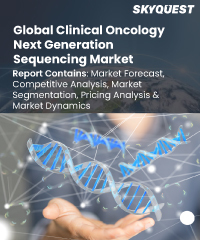
Report ID: SQMIG35H2071

Report ID:
SQMIG35H2071 |
Region:
Global |
Published Date: February, 2024
Pages:
242
|
Tables:
68 |
Figures:
75
Clinical Oncology Next Generation Sequencing Market size was valued at USD 682.04 Million in 2023 and is poised to grow from USD 785.37 Million in 2024 to USD 2419.21 Million by 2032, growing at a CAGR of 15.15% during the forecast period (2025-2032).
Next generation sequencing, is a type of huge parallel sequencing technique that provides ultra-high throughput, high speed, and scalability for determining the order of nucleotides throughout an entire genome. NGS has been adopted in clinical oncology to advance personalized treatment of cancer.NGS is used to find novel and uncommon cancer mutations, find family members who carry cancer mutations, and give the genetic basis for the most suitable targeted therapy. One of the most crucial steps in the entire sequencing methodology is DNA pre-sequencing, which entails preparing the material for the subsequent sequencing reaction.
For each resistant and responsive genotype-drug combination, our platform analyses the raw NGS data that doctors utilize to classify and interpret genomic changes combined with experimental and licenced medicines. As a result, systems for NGS data processing are increasingly being used for individualised oncology care.
US Clinical Oncology Next Generation Sequencing Market is poised to grow at a sustainable CAGR for the next forecast year.
Our industry expert will work with you to provide you with customized data in a short amount of time.
REQUEST FREE CUSTOMIZATIONClinical Oncology Next Generation Sequencing Market size was valued at USD 592.56 million in 2019 and is poised to grow from USD 682.04 million in 2023 to USD 2100.92 million by 2031, growing at a CAGR of 15.15% in the forecast period (2024-2031).
Want to customize this report? This report can be personalized according to your needs. Our analysts and industry experts will work directly with you to understand your requirements and provide you with customized data in a short amount of time. We offer $1000 worth of FREE customization at the time of purchase.

Report ID: SQMIG35H2071